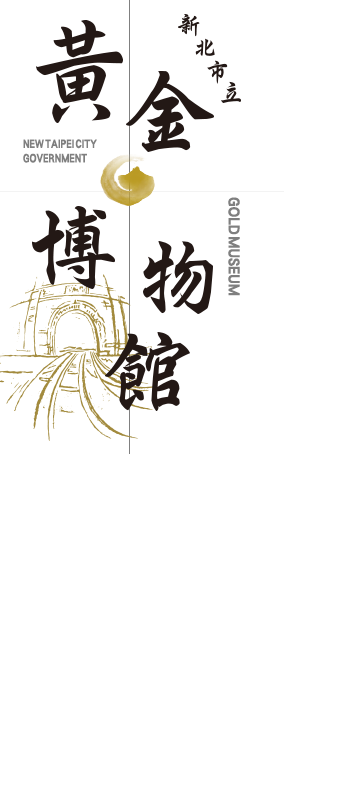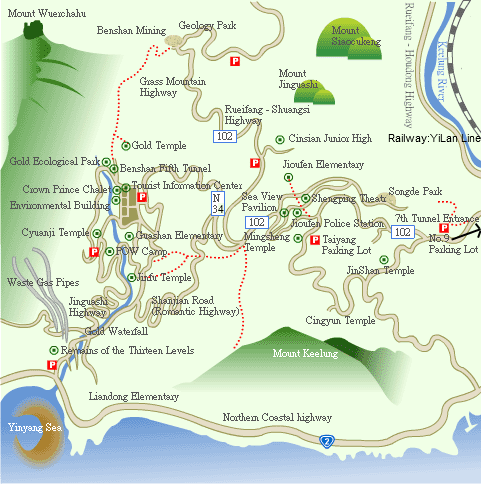 Tour Attractions
Tour Attractions Shuinandong Smelter (13 stories)
Shuinandong Smelter (13 stories)Shuinandong Smelter (13 stories)
Located above Liandong Bay on the Coastal Highway, this was the ore sorting and smelting plant for the Taiwan Metals Mining Corp. It is built into the hillside and old miners and local people usually call it “13 stories.” The process of smelting ore at Jinguashi was split into mining, sorting, smelting and refining. Shuinandong Smelter (13 stories) was an important facility in the gold making process. Built in 1933, the Shuinandong Smelter (13 stories) now resembles another neglected Pompeii, bearing witness to the large scale of the mining industry in “gold mountain” in times gone by, an industry hoping for an opportunity to live again.
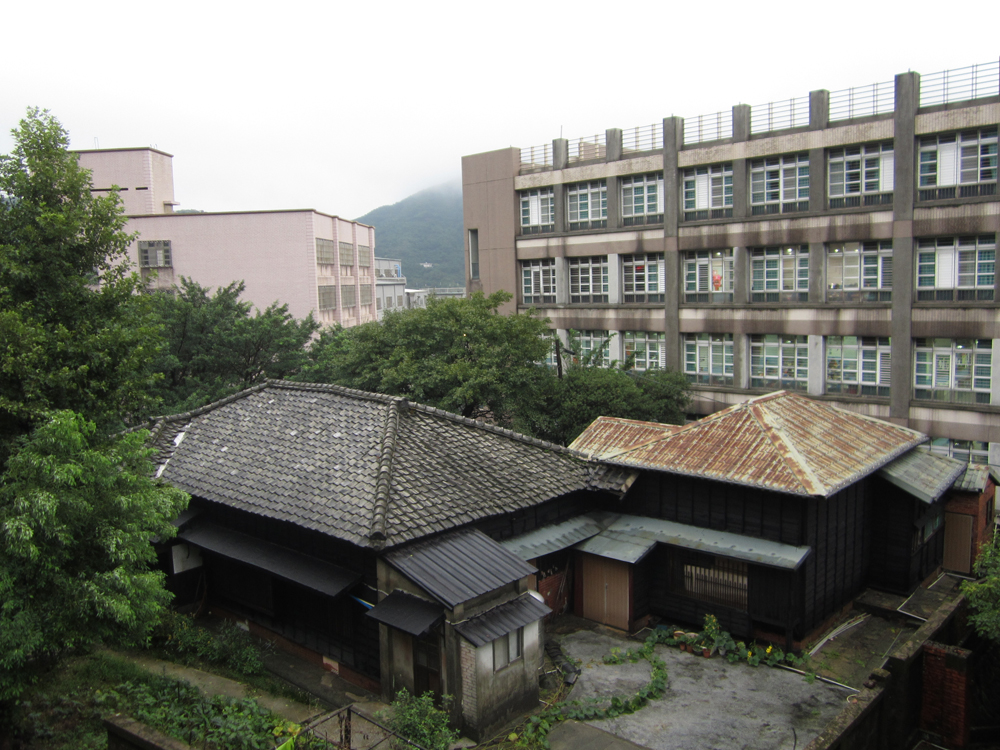 The Residence of Mike Kikujirou
The Residence of Mike KikujirouThe Residence of Mike Kikujirou
This is the bureau director’s house used by the second but last director of the Jinguashi Mining Bureau in the Japanese era, Mike Kikujirou (the last director was 戶田貢). It is a very typical Japanese-era detached single dwelling building. It is spacious and has front and back gardens. In previous days it had an excellent view from the front garden but now the view is blocked by a new Shiyu Middle School building.
 Chitang Old Street
Chitang Old Street Chitang Old Street
Walking down the steps outside Jinguashi police station, passing the old Japanese hospital, through Tongshan settlement and up the steps and you reach Cyuanji Temple. This was the most prosperous and busiest street in early Jinguashi. The black asphalt roofs are different heights mixed together. Walking on this street is like taking a trip back in time. In its heyday there were numerous shops here and it was known as “Little Ginza.” Today the street still has long-established general goods stores with old style cigarette display cases. The hand made herbal grass sticky rice sweets they sell should not be missed.
 Teapot Mountain
Teapot MountainTeapot Mountain
Approximately 580 meters high, Teapot Mountain is shaped like a handleless teapot, giving it the name “Handleless Teapot Mountain.” Looking from the Shumei or Cushih mountain direction, it also looks like a crouched lion ready to pounce, which also gives it the name “Lion Rock Mountain.” Teapot Mountain itself is an ore body. It is a breccia ore chimney, comprised mainly of silicified sandstone and shale.
 Jinguashi Shinto Shrine
Jinguashi Shinto ShrineJinguashi Shinto Shrine
The Jinguashi Shinto Shrine, also called the “Mountain God Shrine,” is dedicated to the three deities of “ôkuninushinomikoto, kaneyamahikonomikoto and sarutahikonomikoto. In 1933, after the Japan Mining Company took over the management of Jinguashi mine, it commemorated the event by building a Shinto shrine half way up the mountain below Siping lane. The original shrine included a main hall, prayer hall and pavilion for worshipers to wash their hands. There were also two walkways along the stairs, at either side of which were 3 torii (gate), 5 flag platforms and 1 bronze bull. During the Japanese era large-scale religious ceremonies and rituals were held here every year. Unfortunately, the buildings were damaged in the post-war period and today all that is left are 2 torii (gate), a few stone lanterns and the shrine’s original foundation, beams and pillars.
 Cyuanji Temple
Cyuanji TempleCyuanji Temple
Cyuanji Temple was built in 1896 and consecrated to what was the only golden-faced Guan Gong in Taiwan prior to Retrocession. The gold and bronze Guan Gong statue on the roof of the temple is the largest idol of that deity in Taiwan, weighing more than 25 tons. Each year during Dragon Boat Festival, Cyuanji Temple holds the distinctively local Green Grass ceremony. On such occasions, believers carry a divinity sedan chair in search of herbs stopping whenever the sedan chair’s crossbars point in the direction of sought-after herbs. In addition to various herbs, local residents also collect stones and towel gourds and the ritual takes a whole day. The collected medicinal herbs are taken back to the temple and on the next day washed and dried. On the third day, they are ground into powder using a stone pestle, and then spread to dry, which depending on the weather can take as long as 7 days. Finally, local residents rub the ground herb residue onto balls that are roughly 3cm in diameter, thereby completing the “100 Herb ball” ritual.
 Yin-yang Sea
Yin-yang SeaYin-yang Sea
As you travel along the coastal road you will see a strange scene - a bay where the sea is a mix of yellow and blue. This is Yin-yang Sea. It was initially believed that the sea color was the result of pollution from Taiwan Metal Mining Corp’s smelting activities,but decates after the company stopped its activities, Yin-yang Sea still exists. Scholars say that the Jinguashi geology has a large amount of pyrite that, after millions of years has formed Fe3+ which does no dissolve easily in water. This forms iron ion floating particles when it flows into the sea, resulting in the strange sight of the Yin-yang Sea.
 Changren Tunnel No. 3 flue pipe
Changren Tunnel No. 3 flue pipeChangren Tunnel No. 3 flue pipe
Crossing the old coal transport tunnel next to the car park behind Cyuanji Temple, you will see three huge flues criss-crossing the hill looking like giant snakes. These were used to take fumes away from the copper refinery to where there were no residents in the hills above. The flues are about two meters high and one and a half meters wide. They were abandoned when Taiwan Metals Mining Corp. closed down. Inside the flue a large quantity of secondary minerals have accumulated making to unsafe to enter. It is claimed they are the longest flues in the world. They are imposing and are one of the unique sights of Jinguashi.
 Keelung Mountain
Keelung MountainKeelung Mountain
Keelung Mountain is 588 meters high. In the Japanese era, the ridge was the boundary between Jinguashi and Jiufen. The mountain is a landmark in the area. The mountain’s shape resembles a woman lying on her side, and it is also called “big-bellied beauty mountain”. In the Japanese era, the north-south ridge was the border of mining rights for Jinguashi and Jiufen. Mining in the two areas created different scenes in the two areas. Climbing up the stone steps up the mountain, the beauty of Jinguashi and Jiufen can be fully taken in. From the top, you can also see Keelung Islet, Dadun Mountain, Badouzih, Fanzaiao and Bitoujiao.
 POW Memorial
POW MemorialPOW Memorial
The POW camp was on the site of today’s Tongshan Park and was established 1942-1945. The two rows of five miner’s huts became a POW camp when the Japanese had successes in the war in the autumn of 1942 in Southeast Asia and captured numerous Allied POWs. The POWs were forced to work in No.6 tunnel , digging earth, pushing wagons and extracting ore.No.6 Tunnel was a copper and gold mine and temperatures underground were over 40°C. Working conditions were extremely tough. Living conditions were very poor and the prisoners were malnourished. Many allied POWs died of disease or as a result of accidents in the mine, far away from home. The survivors were repatriated when the war ended. One, Briton Jack Edwards, returned to Taiwan to help investigate war crimes and found the remnants of a war time order. The Japanese government saw that the war was going badly and planned to kill the prisoners in Taiwan. Although the order was not carried out it is chilling when contemplated today. There is a memorial stone on the site of the camp reminding people of the cruelty and horror of war.
 Jinguashi Mining Aqueduct and Bridge
Jinguashi Mining Aqueduct and BridgeJinguashi Mining Aqueduct and Bridge
There are three parts of the Mining Aqueduct and Bridge. The bottom part was Bao-Jia Road, a beautiful arch bridge made of stones, of the Qing Dynasty. The top part was a cross-valley aqueduct made of cement in 1935. The middle part was a cement bridge for passengers built after the World War II. This bridge and the related facilities along the aqueduct witnessed the gold mining history in Jinguashi, and they were designated as a municipal historic site by New Taipei City Government on August 11th, 2005.
 The Jinguashi Geological Park
The Jinguashi Geological ParkThe Jinguashi Geological Park
The Jinguashi Geological Park used to be Benshan Mine, where the outcrop of Main Vein ore body, the largest ore body in Jinguashi, lay before.Main Vein ore body not only was on a large scale but was the main gold and copper vein in Jinguashi.
 The Golden Falls
The Golden FallsThe Golden Falls
After the mining industry closed, the clogged tunnels blocked the way of the groundwater. The groundwater flooded out from the outlet of the Golden Falls, and therefore, the fall was formed. The groundwater is rich in pyrite and enargite, and then, becomes acid mineral water through the process of oxidization-reduction and iron catalysis. In addition, due to the gap on the terrain, it became a natural wonder. It is also one of the main sources of Yin-Yang Sea.
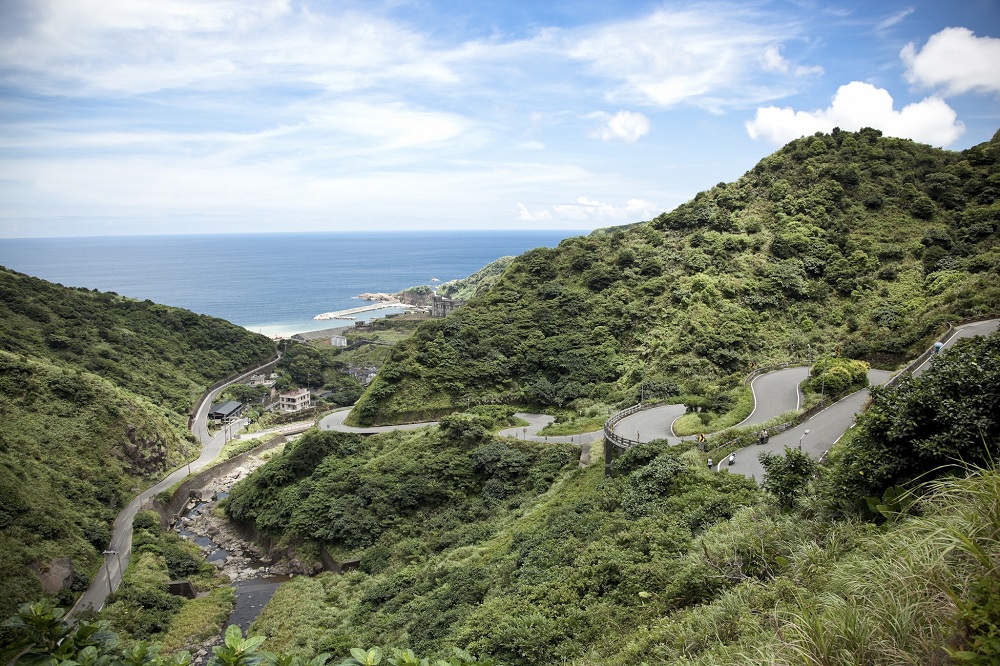 Jin-Shui Highway
Jin-Shui HighwayJin-Shui Highway
In the early of Japanese colonial period, in order to connect Jinguashi and Shuinandong, the highway was built as a winding industrial road for transportation. It was not until 1930 that the Japanese Mining Corporation expanded the highway for car travel.
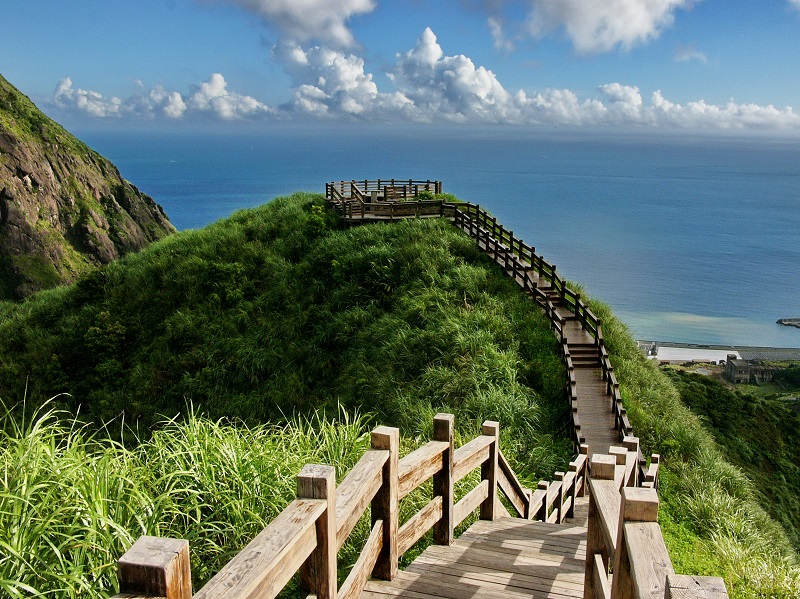 Baoshi Mountain
Baoshi MountainBaoshi Mountain
Baoshi Mountain is at an elevation of 260 metres. It is said that it was named after the sirens that sounded at regular time in the mountain during Japanese colonial period. Visitors can always enjoy the breeze and beautiful scenery of the mountain while hiking.
